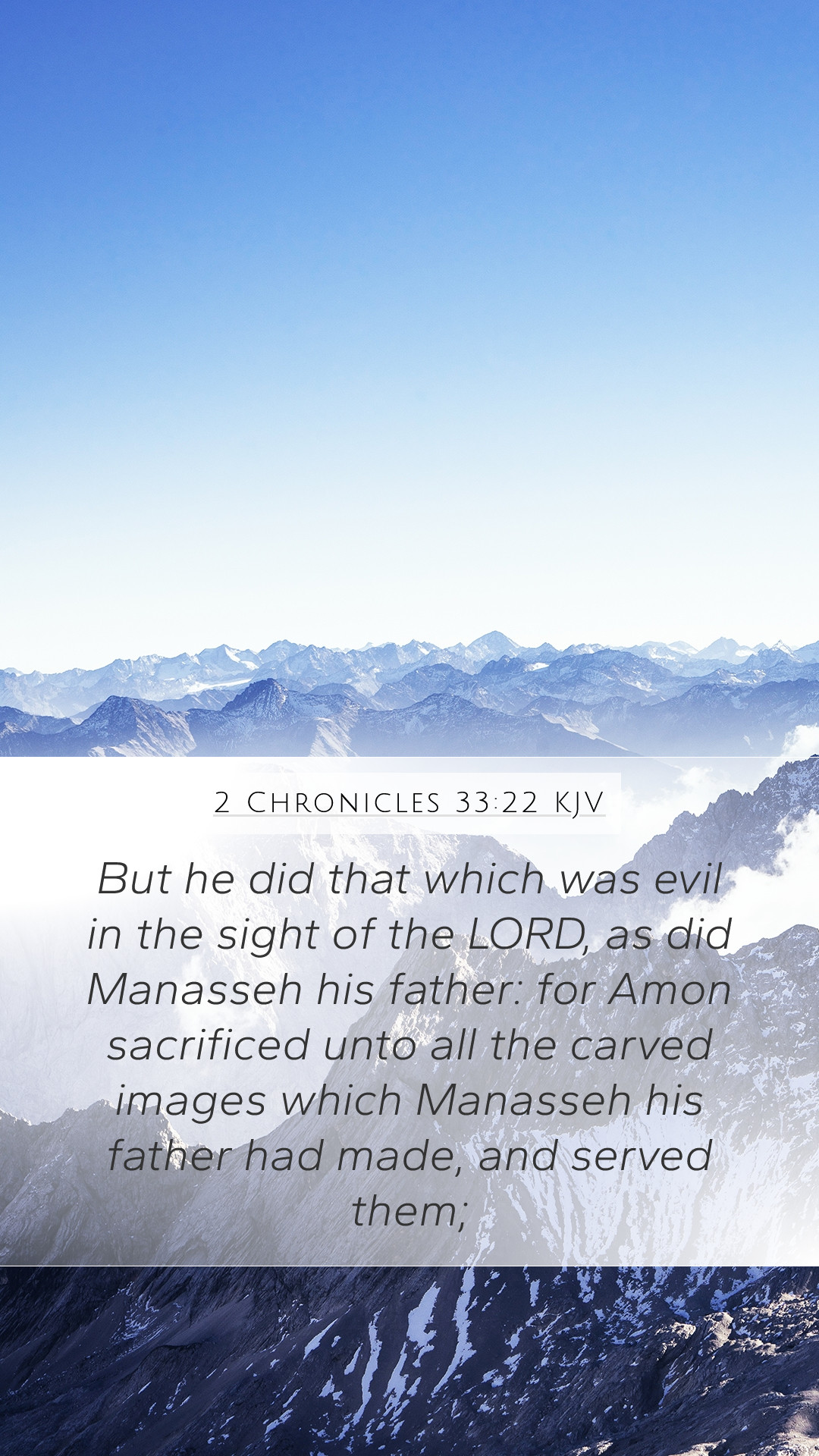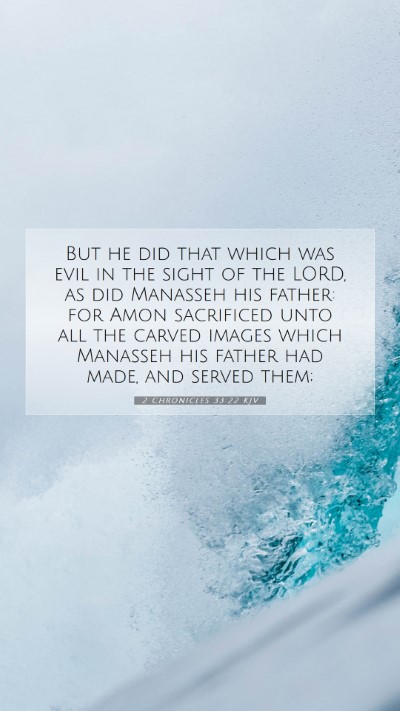Understanding 2 Chronicles 33:22
2 Chronicles 33:22 states: “But he did evil in the sight of the Lord, as did Manasseh his father; and he sacrificed unto all the carved images which Manasseh had made, and served them.” This verse is part of the narrative regarding King Amon of Judah, emphasizing his continuance in the sinful practices instituted by his father, Manasseh.
Overall Context
The historical context provides crucial insights into the nature of Amon's reign. Amon became king after his father, Manasseh, who was notorious for leading Judah into idolatry and away from the worship of the true God. Amon's actions in 2 Chronicles 33:22 illustrate the continued apostasy of Jerusalem and highlight the challenges faced by the remnant who remained faithful to Yahweh.
Interpretative Insights
-
Matthew Henry's Commentary: Henry emphasizes the gravity of Amon's actions, noting that his evil was not only a personal failing but also a collective sin for Judah. It illustrates how the sins of leaders can lead to widespread corruption and idolatry among the people.
-
Albert Barnes' Notes: Barnes remarks on the significance of Amon's idolatry, drawing attention to the long-term consequences of Manasseh's sin. He emphasizes that both father and son turned their backs on God, perpetuating a cycle of rebellion against divine authority.
-
Adam Clarke's Commentary: Clarke reflects upon the character of Amon as one who was deeply entrenched in idolatry, much like his father. He notes that Amon's actions were not just passive sin but involved active involvement in religious practices that were abominable to God, thus meriting divine judgment.
Theological Implications
The verse serves as a poignant reminder of the importance of maintaining faithfulness to God, particularly for those in positions of influence. Amon's failure and the continuation of his father’s idolatrous practices illustrate how sin can be transmitted across generations and the dire need for repentance and reform in leadership.
Personal Application
For modern readers, understanding this verse encourages self-examination regarding the influences we uphold in our own lives as well as how our actions may affect those around us. Just as the legacy of Manasseh impacted Amon, our choices can either lead others towards faithfulness or astray into moral decline.
Cross References
- 2 Kings 21:20-22 - Overview of Amon's reign and practices
- 2 Chronicles 33:3 - Description of Manasseh's sins and idolatry
- 2 Chronicles 33:24-25 - Amon's death and its aftermath
- Jeremiah 7:30-31 - God’s condemnation of the practices in Judah
- Romans 5:12 - Acknowledgment of sin's nature spreading through generations
Conclusion
The verse, 2 Chronicles 33:22, serves as a stark illustration of the perils of turning away from God and the consequences that such actions can have. Both individual and communal faithfulness play a crucial role in upholding the integrity of God's covenant with His people.


